Amphisarca Lists
-
The secret of increasing production of apricot trees
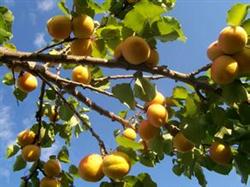
"Yunda Quan Fruit" is a new special growth aid for the balance of vegetative growth to reproductive growth on fruit trees and fruit vegetables (such as tomatoes, eggplants, melons, etc.). Its main features are: ① non-toxic performance, so that the fruit does not leave any residual poison, to achieve pollution-free, become a green rest assured product. ② promotes flowers quickly and quickly.
2018-07-30 -
Seedling raising technique of apricot

In recent years, as the market of bulk fruits such as apples and pears tends to be saturated, the market potential of miscellaneous fruits is great, especially the prospect of fresh apricots and kernel apricots is promising. Apricot is deeply loved by fruit growers because of its strong adaptability, easy cultivation, low investment and quick effect. Most of the seedlings are bred in rural areas, and their offspring vary greatly, which is not easy.
2018-07-30 -
Five key points in the management of apricot trees after unloading fruit
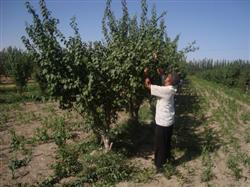
First, thinning branches to remove the new apricot heads sprouting from the overdense perennial branches and backbone branches. Branches are evacuated and red apricots are full; branches are crowded and hanging is empty. Therefore, those who are in the wrong position and do not plan to be reserved for use as regeneration branches should be removed as soon as possible. Second, to pick the heart is to cut off the buds at the top of the apricot head. Usually take it off.
2018-07-30 -
How to cut apricot trees in winter?

Introduction: Brown rot is also called fruit abdomen disease. In rainy years, such as serious fruit decay pests, brown rot is prevalent all the year round, resulting in a large number of rotten fruit and fruit drop, resulting in great losses. 1. Symptoms can affect flowers, leaves and fruits, especially fruits. (1) Flower organ: flower damage, browning and wilting, more.
2018-07-30 -
Measures for fertilizer and water management of apricot trees
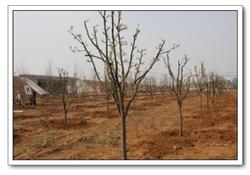
The main results are as follows: 1. fertilizing young trees in the first year of planting, applying fertilizer with thin application, in order to rapidly expand the crown and form a certain number of flower buds. The first fertilizer was applied when it sprouted after planting, and then topdressing once every 15 ~ 20 days, mainly urea, combined with phosphorus, potash and organic fertilizer. Stop topdressing at the beginning of July and control it properly.
2018-07-30 -
What are the environmental requirements for the growth of apricot trees?
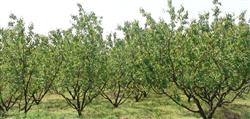
Apricot is a perennial deciduous fruit tree with natural growth of more than 10 meters. It has a long life, like light, cold, drought and barren. It has strong adaptability to the external environmental conditions, and the range of suitable cultivation is also very wide. The average annual temperature in the main producing areas is-5-22 ℃, and the annual accumulated temperature above 10 ℃ ≥ is 1000-6500.
2018-07-30 -
Soil testing and Formula fertilization Technology of Chestnut
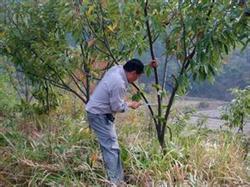
1. The balance of the main branch (take the three main happy shape as an example). The main branch is the main skeleton that supports each branch. Before pruning, first take a closer look at the orientation and growth of the three main branches, and then adjust them after you have a good idea in mind. For strong and strong (large proportion of roughness) of the main branch, the angle can be enlarged, or the lateral branch can be used instead of the main branch to lengthen the head, combined with peeling.
2018-07-30 -
How to manage persimmon after fruiting
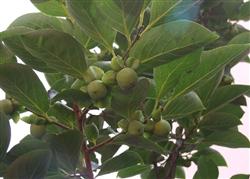
Timely fertilization when the transverse diameter of the fruit is 4cm and the fruit size is basically fixed, strong fruit fertilizer and pre-harvest fertilizer are applied, mainly quick-soluble nitrogen, phosphorus and potassium fertilizer, urea 1.5 kilograms, potassium dihydrogen phosphate 0.75 kilograms per tree, or nitrogen, phosphorus and potassium compound fertilizer 1 kilogram, or 1 kilogram after rain.
2018-07-29 -
Foliar topdressing of persimmon after fruiting
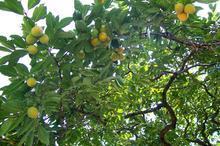
Timely fertilization when the transverse diameter of the fruit is 4cm and the fruit size is basically fixed, strong fruit fertilizer and pre-harvest fertilizer are applied, mainly quick-soluble nitrogen, phosphorus and potassium fertilizer, urea 1.5 kilograms, potassium dihydrogen phosphate 0.75 kilograms per tree, or nitrogen, phosphorus and potassium compound fertilizer 1 kilogram, or 1 kilogram after rain.
2018-07-29 -
Management of persimmon trees before and after flowering
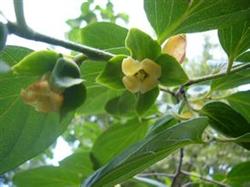
The management of persimmon trees before and after flowering persimmon trees belong to light-loving crops, dense cultivation pay attention to solve ventilation and light transmission, this is the main measure of high-yield management, persimmon tree results are axillary bud results, so thinning out long branches, strengthening branch nutrition accumulation is very important, pay attention to amino acid coating before flowering, promote flower bud differentiation, overcome size...
2018-07-29 -
Shaping and winter pruning of persimmon trees

Persimmon belongs to light-loving crops. Close planting should pay attention to ventilation and light transmission, which is the main measure of high-yield management. Persimmon results in axillary buds, so it is very important to remove strong long branches and strengthen nutrition accumulation of branches and stalks. It is very important to pay attention to amino acid coating before flowering, promote flower bud differentiation, overcome age, and promote early hanging fruit.
2018-07-29 -
Disease control of persimmon trees
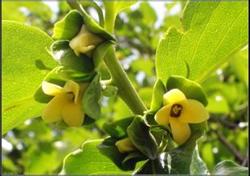
Fertilizer and water management at flowering stage in ecological persimmon orchard is an essential and specific measure. The aim is to push the growth order of persimmon to the most exciting part. Highlight the supply of nutrients in order to achieve the best effect of flower and fruit protection. In this way, all the inappropriate means and measures in the flowering management of persimmon orchard are omitted. Both very well.
2018-07-29 -
Management of cultivation techniques of papaya
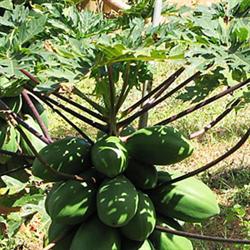
(1) varieties. Papaya varieties. (2) Land conditions. From 300m to 900m above sea level, the soil type is yellow brown soil, the thickness of soil layer is more than 50cm, the pH value of soil is 5.3cm to 7.0m, and the content of organic matter ≥ is 1.0%. (3) cultivation and management. 1. Seedling breeding: seedling propagation. The seedling is divided.
2018-07-29 -
Cultivation techniques of papaya

Papaya is a perennial deciduous shrub or small tree of Rosaceae, which is mainly distributed in East China, Hubei, Jiangxi and other places, and is also cultivated in Henan and Hebei. Papaya is used for both food and medicine, mainly for medicinal purposes. Papaya is used as medicine in ripe fruit, which is sour, astringent, warm and contains saponins, flavonoids, malic acid, tartaric acid and wolfberry.
2018-07-29 -
Cultivation and management techniques of papaya
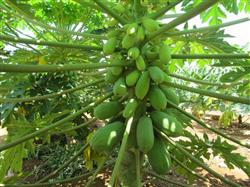
1. Select excellent varieties. Suitable for local varieties are Yizhou papaya, poinsettia papaya and so on, and can pollinate each other. 2. Planting and establishing the garden. It is appropriate to choose loam or sandy loam with deep and fertile soil layer, good drainage, neutral or slightly alkaline soil. The row spacing is 2.5 m × 4 m. Dig 1 m long, 1 m wide and 0.8 m deep before planting.
2018-07-29 -
Control of root rot of papaya seedlings
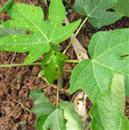
Papaya is a subtropical crop, which is raised and transplanted. The analysis shows that the main causes of root rot at seedling stage are stagnant water in seedling bed after rain, high concentration of fertilization at seedling stage, invasion of nematodes and root rot pathogens. Prevention and control measures: 1. The root system of papaya should carry out respiration in the soil. Hypoxia under the condition of hypoxia.
2018-07-29 -
Economic fertilizer application amount and suitable proportion of papaya trees
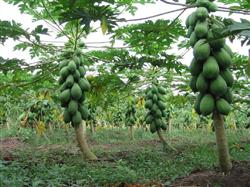
The amount of economic fertilizer application is the lowest amount of fertilizer application when high yield, high quality (or high economic benefit) is obtained due to the effect of fertilization. Practice has proved that, in a certain range, the yield and quality often improve with the increase of fertilizer application. However, when the amount of fertilizer application reaches a certain level, the yield and quality of fruit will increase with the amount of fertilizer application.
2018-07-29 -
Control measures of papaya rot head disease
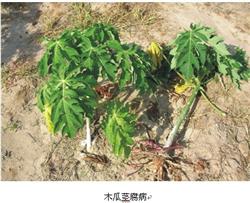
Papaya appeared different degrees of rotten head, even lodging and dead plant phenomenon, should be the occurrence of stem rot, high temperature and wet, more prone to disease. Control: generally used for melon root rot, disease control or bacterial agents. If you find a diseased plant, remove the soil from the neck of the diseased plant and use sterilized bamboo chips.
2018-07-29 -
There are ways to protect papaya from cold.
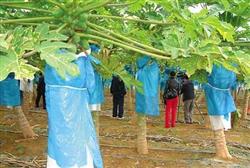
Papaya is a tropical crop, like hot climate, avoid low-temperature frost. Freezing injury occurs when the temperature is lower than 5 ℃. It is very important to take the following measures to prevent freezing: re-application of overwintering fertilizer. Each tree is treated with 10kg of organic fertilizer mixed with mature human and animal manure and plant ash, and 1.5 kg of phosphate fertilizer. At 80cm and 100cm from the trunk, dig 2.
2018-07-29 -
Control of brown rot of papaya
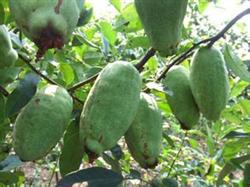
Generally multi-row ground planting, but you can also make pile scenery to implement potted plants. The suitable planting period is before sprouting in early spring or after defoliation in early winter. When the seedling comes out of the nursery, keeping the intact root system of the seedling is one of the keys to the survival of planting. Generally, large seedlings should be planted with soil balls, and small seedlings should stay in the lodging soil according to the situation. The seedlings should be added after planting.
2018-07-29
